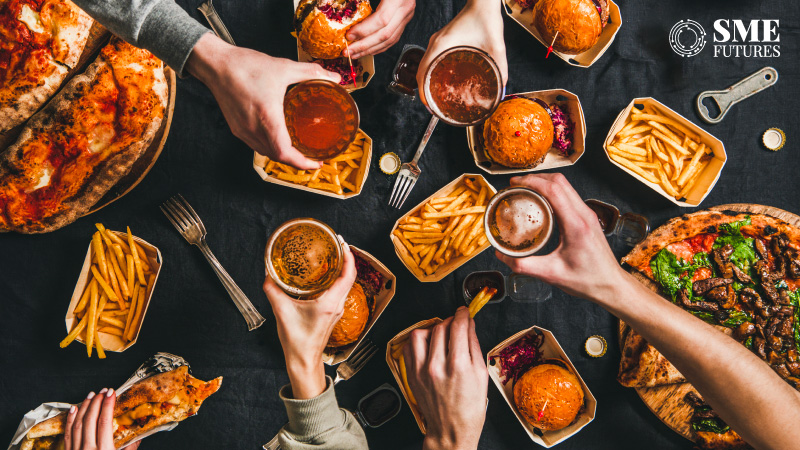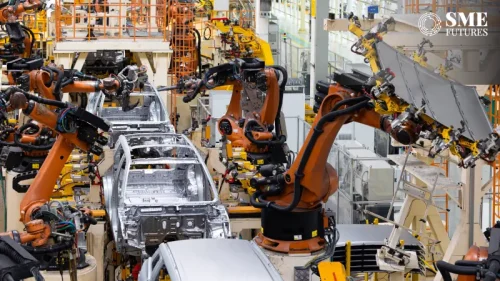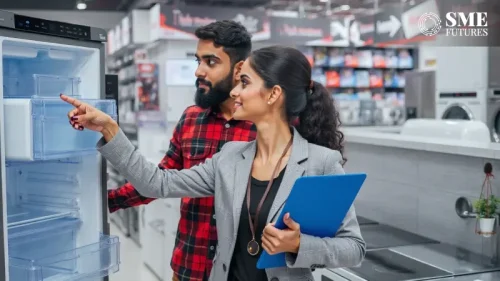The Quick Service Restaurant (QSR) industry is back with a bang after the pandemic. The food and beverages market is flooded with new brands and products, more than ever now. The QSR industry has become one of the fastest growing markets in the post-pandemic world. According to a report by Researches and Markets, the QSR market in India is projected to grow at a CAGR (compound annual growth rate) of over 18% during 2021-2025.
There are many reasons that have revved up the upswing of the QSR industry: from the new entrants in the market who are seizing the opportunity to capitalize on the food services market to the change in food habits and consumer behaviour, mostly led by the millennials. The QSR market is witnessing new demands from its customers and is coming up with new strategies to meet them. The future of the QSR industry also seems bright due to the immense prospects and potential within this market, which could be highly beneficial for the individual players as well.
“Due to the inherent strength of home delivery and value-for-money offerings, fast food chains in India are seeing a faster recovery and are likely to grow as customers prefer familiar quick service restaurants (QSRs) to dine in and place orders at,” says Sahaj Chopra, Director & Co-Founder, Fat Tiger.
How have things changed and current trends
Remember how fascinating it seemed back in the early 2000s when Dominos came up with their promotional offer of ‘Delivery in 30 minutes or the product is free’. We felt so much in awe then. Since then, technology has come far and the QSR industry has become much more competitive now. With umpteen number of players in the market today, everyone is trying to topple their competitors by bringing in new initiatives and products to lure customers.
Also Read: Indian startup ecosystem: Leading economy, fostering innovation
The whole ecosystem has changed drastically over the years. With advancements in technology, multiple facets have been creatively moulded to tackle consumer issues one-by-one. There are apps now for delivery; your food now reaches you even before the 30 minutes’ wait time and companies are constantly striving to make these deliveries happen at a much quicker pace.
“In an effort to avoid contracting the coronavirus, the public became more cautious about where they spent their time outside during the pandemic. Indeed, even as eateries reopened, it took some time for in-café feasting to come up to the pre-pandemic levels. Many people still preferred to buy quick-prepare foods for takeout rather than dining in. The coronavirus made a new trend for us, and one of those new trends is getting food quickly,” Chopra points out.
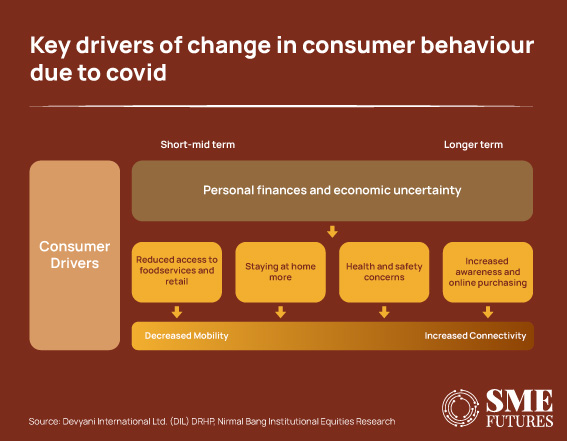
Post-pandemic, customer demand for food that maintains safe health and hygiene standards has increased and this has suited the QSR industry well. Fast food chains operating at a quick pace by keeping food items pre-ready to serve as soon as any order arrives has facilitated the change in consumer behaviour towards quick delivery while maintaining high standards of health and hygiene.
To expand sales and promote new products, restaurants are coming up with strategies to sell their food items in the form of combos or bundled meals. This technique is working as a key driver in enhancing sales as people tend to order more in a group, making ordering food items for three to four persons at a time more cost-effective.
“F&B combos work terrifically because they provide customers with the option of a whole and fulfilling meal with the added advantage of discounted/bundled pricing. However, brands should be wary of the fact that bundled combos should be harmonious, i.e., the food and beverages bundled in a combo should be complementary to each other,” underlines Chaitanya Bhamidipaty, Co-founder, Roastea.
“Marketing and distribution costs are reduced by bundling, which helps to improve efficiency. It lets the customer look at a single source with multiple options. Over time, profits on individual sales can be significantly increased when a product bundling strategy is successful. A higher initial return on the cost of acquiring a customer occurs due to selling multiple products in a single solution,” Chopra adds in.
New tech means more business
Contactless deliveries have become the new norm for QSR’s today. Tabletop kiosks can be found at most of the major food chain outlets. This makes the process even easier than before for customers by not requiring them to stand in a queue while waiting to place their orders; and then having to wait another 10-15 minutes for them to be completed. Although a common thing in the West, tabletop kiosks have assumed more prominence in India after the pandemic.
Also Read: ‘Hyderabad accounts for one-third of new IT jobs created in India’
“There are many reasons for why customers want contactless ordering. Some people prefer this method for health reasons, while others prefer the degree of control that they can have when they make their own decisions. Some people like the fact that ordering from a kiosk usually takes less time than ordering from a counter,” says Chopra.

Adapting to the changing norms and consumer demands is important for sustaining any business. The emergence of online apps like Zomato and Swiggy are prime examples of how digitalisation and artificial intelligence (AI) can make the multiple processes related to food delivery and food handling easier to manage and operate. Also, apps provide consumers with more options to choose from, giving multiple individual QSR businesses the opportunity to flourish. Hence, it is necessary to get QSR businesses aligned with the advancing technologies to make gains in the market.
QSR strategy; individual effort
QSR strategy works on one basic principle – focusing on the number of footfalls and keeping low margins on food products and using that to garner more customers. If you keep the margins low and competitive, more people will tend to buy from you rather than opting to buy from an outlet that has expensive food products.
Having very less dine-in options and mostly focusing on rapid food delivery can be beneficial for the QSRs as they won’t have to invest on the resources required to run a dine-in restaurant. This strategy is being implemented by many individuals who are utilising it to keep their management and operating costs as low as possible while trying to garner more footfalls by competitively pricing their food items.
Also Read: RBI stopped printing Rs 2,000 notes from 2018-19
“Strategies and market positioning should be crystal clear from day one. If these are sorted, small entrepreneurs can easily delve into the QSR market. Having an abundant amount of clarity and insight about the supply chain and the marketing and sales-related strategies is important. The other qualities that are important for any entrepreneur are- remain relevant over time by constantly seeking feedback and acting positively on it, be flexible enough to make critical changes to the business model/offerings if needed and be attuned to the pulse of the consumer,” Bhamidipaty elaborates.
Future of the QSR industry in India
“From FY 2016 to FY 2020, the QSR market grew at a rate of 17.27% and is expected to reach the enormous size of $826.37 billion by FY 2025. The QSR segment is also growing as a result of technological advancements such as improved POS systems, diverse payment options, and improved geolocation to aid the delivery segment,” says Bhamidipaty.
The future of the QSR industry also depends on multiple macro-economic factors; any disparity between the income of a person and the cost of the products that they offer can turn out to be a negative aspect for the QSR industry. But millennials are showing a good response to the outlets falling under the QSR segment. There is an increasing trend of consuming outside food that is being led majorly by the millennials. This trend is working immensely in favour of the QSR industry.
“After experiencing this growth & looking at the trends that are going on, the QSR industry has an immense opportunity for further growth in India. The opportunities are big because the future competitions are going to be big and consumer expectations will be at their peak. A rapidly developing India has a high scope for this industry and studies suggest that there will be a threefold increase in revenue for this sector in the next 4 to 5 years. Artificial Intelligence and machine learning are the current QSR technologies which must be adopted as soon as possible. Cloud POS along with smart inventory can be accomplished through technology as well,” says Biraja Prasad Rout, Founder, Biggies Burger.
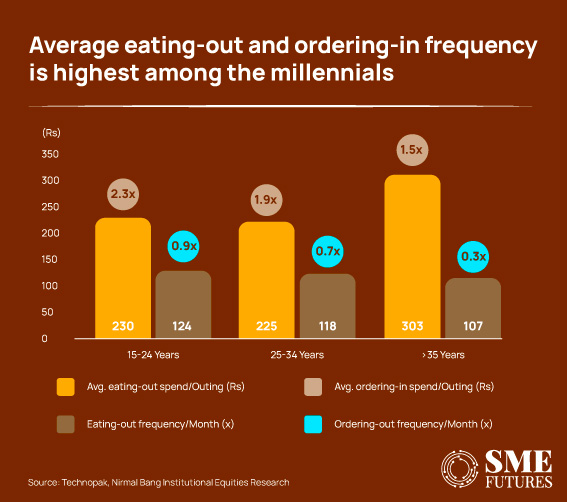
The Indian food service industry is also showing a profitable upward trend that has been growing by 8 per cent over the past six years and it is expected to zoom at a higher rate in the coming years.
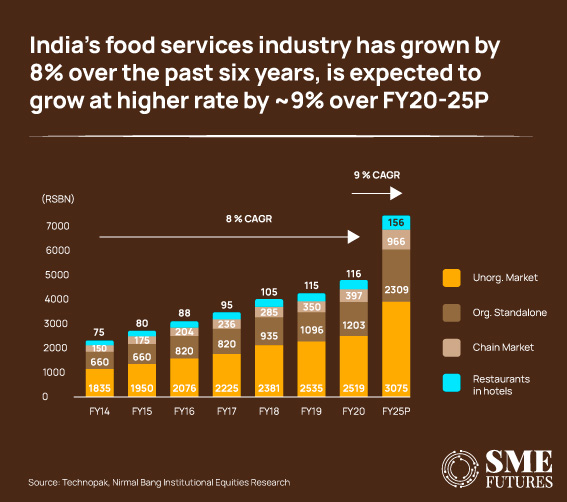
Customers need a seamless, convenient and comfy eating experience and the QSR industry has shown that it can offer it all. Mobile ordering will continue to rise in the future. The interface between the physical and the digital experience in food delivery will see further change. The QSR industry will have to optimize this experience.
Timing their food pickups well will play a crucial role in the growth of this industry. The QSRs have to bring in more accuracy and precision in timing their food preparations and they must ensure that the freshness of their food is kept intact at all times. For this, the QSRs will have to factor in the locations of their customers and use the right technology to make the whole process faster.
It’s also important that the QSRs add more features and tools — like loyalty points and special menus — to their apps to make them more personalized, bespoke and tailored.
Since ordering-ahead is going to be the top trend in this industry for the foreseeable future, it will be a challenge for the QSRs to strike the perfect balance between time and quality. They will have to raise the bar and set their priorities right.

